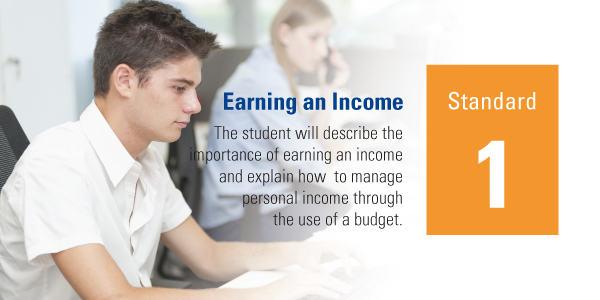PFL 1.1: The Value of Work and Financial Responsibility
PFL 1.2: Understanding the FAFSA
PFL 1.3: Managing Income and Expenses
PFL 1.4: Creating a Personal or Family Budget
PFL 1.5: Smart Spending and Financial Strategies
View full details of each section of this standard below the Teaching Resources.
Oklahoma State Department of Education: Making $en$e: Financial Success Curriculum | view now
PFL 1.1 Describe the value of work and how individuals are responsible for their own financial decisions, as well as subsequent consequences.
A. Explain how costs and benefits determine the achievement of personal financial goals.
B. Analyze how income, career choice, and entrepreneurship impact an individual’s financial plan and goals.
C. Evaluate the relationship between a person’s human capital (e.g., education, skills, training, interests, initiative) and their earning potential.
PFL 1.2 Identify the purpose of the Free Application for Federal Student Aid (FAFSA) in determining eligibility for grants, scholarships, and loans, as well as the essential information needed to apply.
PFL 1.3 Explain how to manage personal income and expenses to be a financially responsible citizen.
A. Identify factors that can affect income by describing the basic components of a paystub, including gross pay, net pay, and deductions (e.g., federal and state income tax, FICA, and voluntary deductions).
B. Differentiate between needs and wants in order to develop short, medium, and long-term goals that are specific, measurable, attainable, realistic, and time-based.
PFL 1.4 Identify the components of a personal/family budget (e.g., income, savings/investments, taxes, emergency fund, expenses, and charitable giving) based on specific goals (e.g., financial, personal, educational, and career).
PFL 1.5 Explain how fiscally responsible individuals use various strategies and spending plans for tracking their income and expenses, both anticipated and unanticipated.
